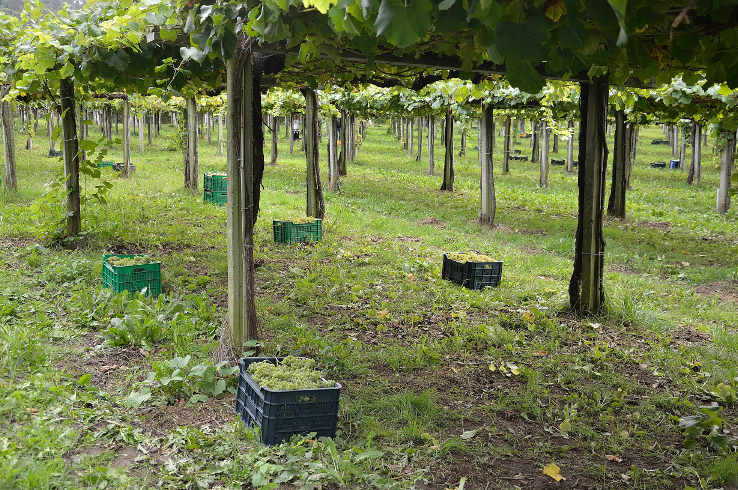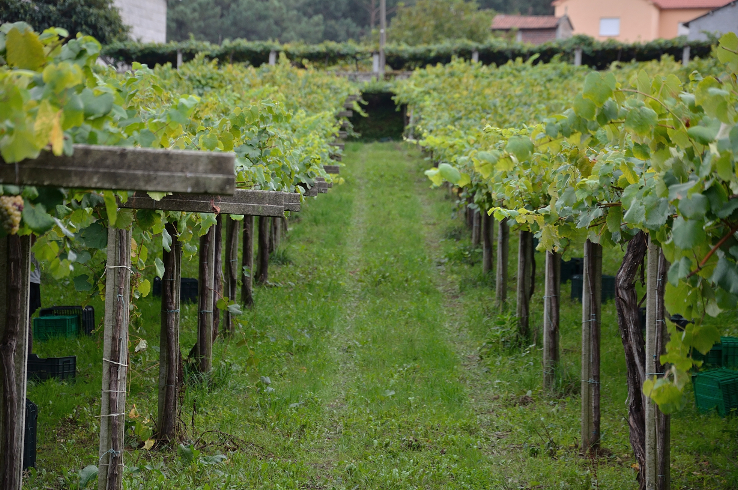2020 Viña Cartin Rías Baixas Albariño
Quintessential is the only word I can use to describe this wine. It comes from the ancestral home of Albariño, located directly on Spain’s Atlantic coast. It’s bright and refreshing… a solid weeknight staple.
Sustainable farming practices and hand-harvested.
- Tasting Notes Meyer lemon, clementine, citrus pith, honeydew, white grapefruit, marcona almond, sea salt
- Variety Albariño
- Region Spain, Rias Baixas
- Volume 750ml
- Alcohol Volume 13%
- Table Talk This wine comes from Val do Salnés, which many call the birthplace of Albariño.
Viña Cartín was founded in 1977 in Spain’s Salnés Valley, the oldest of Rias Baixas’ five subregions. In 2003, Viña Cartín moved their operations to a new location—an old winery in the heart of the area—and refurbished its interior with modern technology, yet maintained the estate’s artisanal character.
Contrary to the many regional wineries who purchase fruit, Viña Cartin proudly owns and sustainably farms 50 acres of their own vines. This direct access to the source allows them to control the raw material from start to finish. The estate’s vines average 30 years in age and benefit from the influence of the nearby Atlantic ocean. The resulting wines are bright, balanced, and laden with natural acidity.
ALBARINO
A pleasantly refreshing light white wine. Most known from Rias Baixas in Spain, but additionally as Vinho Verde in Portugal. Albariño’s are generally high in acid with refreshing citrus fruit flavors and a notably saline mineral character due to the regions’ proximity to the ocean. Serve these wines well-chilled while eating fish tacos on a hot summer day, you won’t be disappointed.
GALICIA, SPAIN
Part of what can be referred to as “Green” Spain, Galicia is located in the upper north west corner of the country. Wine production here dates back to the time of the Romans. It is one of the coolest areas producing refreshingly crisp Albariño with strong mineral characteristics as well as elegant red wine from the Mencía grape. Galicia boasts five denominated wine regions (DOs) including the infamous Rías Baixas, the closest DO to the Atlantic ocean.
Related Items
-
2023 Domaine Garnier et Fils Chablis AOC
$36.00Chablis is a staple at Argaux. So when we decide to add a new one to the book, you better believe we have done our homework. This particular bottle was chosen after it won a blind tasting against 17 different bottles of Chablis. We invited our top Chablis clients to join us for the battle and this wine was voted #1. Enough said. It is a must-try.
Organic farming practices, native yeast fermentation, aged on the lees in stainless steel tanks for 11 months and filtered before bottling (no fining).
-
2019 Domaine Alain Burguet Gevrey-Chambertin ‘Lavaux Saint Jacques’ Premier Cru
$225.00This rustic Pinot Noir hails from a premier cru climat just west of Gevrey-Chambertin. The palate is medium-bodied with rich and concentrated flavors, nice acidity, and integrated tannins. Aged for 19 months in barrel (50% new oak).
Like all of Burguet’s wines, this bottle is produced from organic (converting to biodynamic) fruit, native yeasts, and is bottled unfined / unfiltered. Only 50 cases produced.
-
2024 Chateau Saint Pierre IGP Méditerranée Tradition Rosé
$24.00This light rosé captures the essence of Provence with its delicate balance of fruit, floral notes, and refreshing minerality. It’s the kind of wine that fits in just as easily at a poolside lunch as it does with grilled seafood, summer salads, or a sunset aperitif. Bonus: it delivers Provence-like quality at a far friendlier price point.
Chill it. Pour it. Love it.
Certified with High Environmental Value (HVE3), emphasizing eco-friendly viticulture (practicing organic), hand-harvested and family-owned.
-
2020 White Rock Vineyards Napa Valley Estate Chardonnay
$45.00White Rock Vineyards is shaped by its volcanic soils and bedrock, which yield small berries packed with deep, concentrated flavor. This Chardonnay is a true expression of that terroir—elegant and layered, with silky richness balanced by crisp acidity. Notes of stone fruit, yuzu, and freshly baked pain au lait lead into a creamy mid-palate and a refined, mineral-driven finish. Perfect alongside tapas, charcuterie, or a towering display of fresh seafood. Enjoy now or cellar for years to come.
Organic farming practices, barrel fermented in neutral French oak, aged 10 months sur-lie in neutral French oak, only 500 cases produced.









